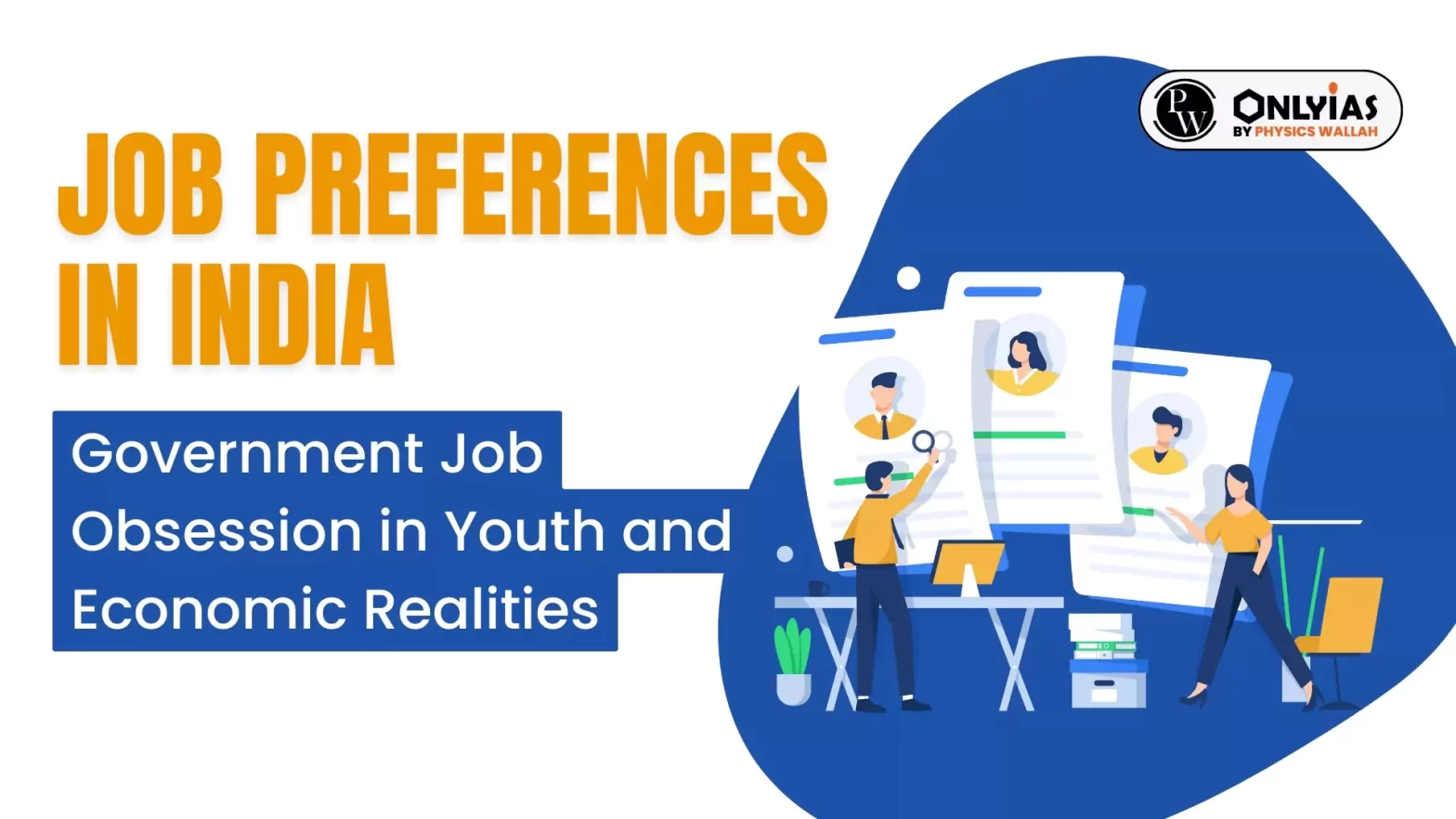Context:
This editorial is based on the news “Why India’s Youth Is Chasing The Sarkari Naukri” which was published in the Indian Express. Recently, the Uttar Pradesh government announced that the police constable recruitment examination held on February 17 and 18, 2024 stands canceled and will be held again within six months. This issue again highlights the preference of students for government jobs.
Government Jobs in India: Stability, Facilities, and the Impact of Economic Reforms
- Stability: The certainty of having a wage through their entire working life in government jobs seems to be most attractive to them.
- However, it impacts the efficiency of the organisation and person itself, as most people do not work in an efficient manner by thinking that they are on a permanent job.
- Availability of Various Facilities in the Government Sector Jobs: A way of access to good and cheap healthcare, subsidized housing, education and transport and a belief that such a job provides access to power and respect.
- Impact of LPG Reforms: The LPG reforms in India has led to a positive growth in the service sector, for which specific high skills are required and most of the population are facing this challenge and tilting towards government jobs.
- The LPG reforms in India brought several positive outcomes. However, in the manufacturing industries, it has led to very little employment and market-based reforms led to the economic disparity between the rich class and the poor class.
Periodic Labour Force Survey (PLFS): Income Disparities, Employment Profiles, and Taxation Trends in India
- Carried Out: The PLFS has been carried out every year since 2017-18 and covers over 4,00,000 people in roughly 1,00,000 households.
- Tax Payers: Just about 11% earn enough to be able to pay income tax.
- Job Profile: Among those who do earn, about 57% are self-employed, 21% earn a wage or salary and 22% earn from casual labour.
- Government Jobs vs Private Jobs: The number of those employed in government service is 9% and 12% are in private employment.
-
Income Variation across different Income Groups:
-
- Among the lowest three deciles of all earners, income from wage or salaried employment far outstrips income through self-employment.
- Average Income: For a salaried employee, it is about Rs 20,000 and for self-employed, it is about Rs 13,347.
- Self Employed: For monthly incomes in the range of Rs 11,000 to Rs 25,000, the self-employed earn more.
- Salary Earners: For monthly incomes above Rs 25,000, salary earners earn more money.
State-Wise Income Dynamics in India: Variances in Earnings between Salaried and Self-Employed Sectors
- Big Earners: These are the ones who are part of the top two decile of income earners in India, working in a salaried job brings in more income than does having a business.
- Exception: Only in Delhi and Goa that the self-employed earn more than the salaried.
- In Small Enclaves: Like Puducherry, Ladakh and the North Eastern states, salary earners make more money than the self-employed do.
- Punjab: The only state where the average earning for farmers is similar to others who are self-employed. However, traders earn more than farmers.
- Tamil Nadu: The salary earners earn a higher income than the self-employed.
- Most States: In most states, incomes for the self-employed in manufacturing are considerably lower than what the self-employed engaged in trade or construction earn.
- In Other States: For the bottom deciles where monthly income is in the range of Rs 4,000 to Rs 10,000, the salary earners make more money than the self-employed do.
Conclusion:
In the disproportionate scenario among jobs and incomes in different states of the country, the government needs to provide more equitable access to good and reliable facilities in education, health, housing and public transportation for all people at nominal rates or free of cost. It would go a long way to make self-employment an attractive option.
![]() 1 Mar 2024
1 Mar 2024

